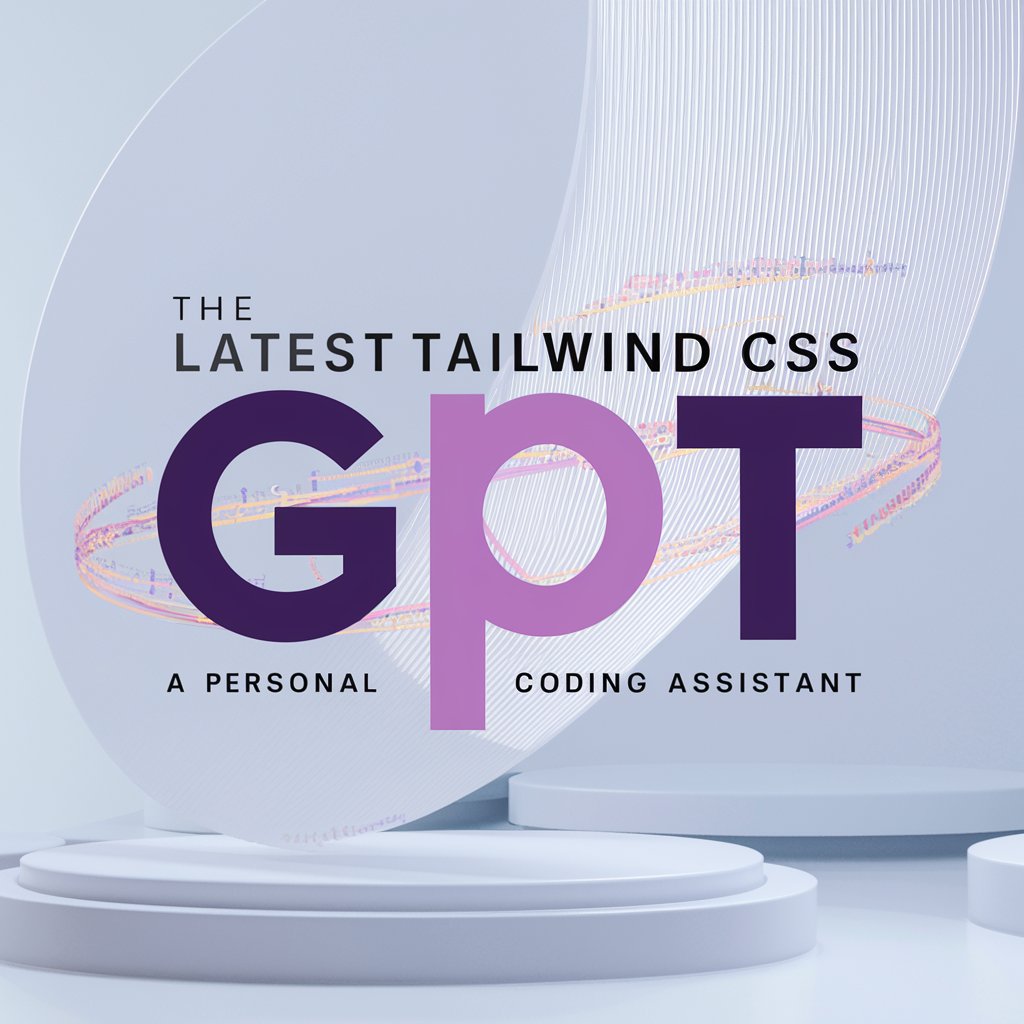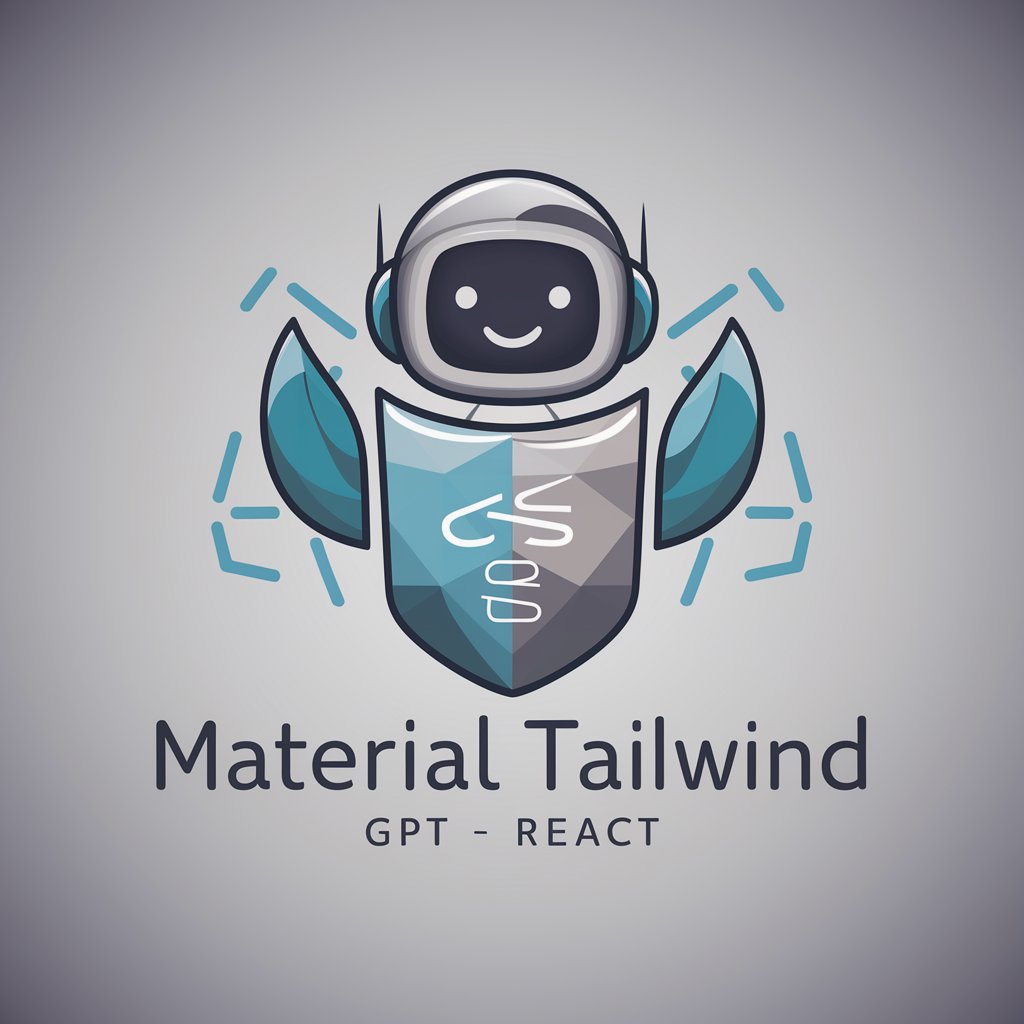
[3.3.7] Tailwind CSS GPT - Tailwind CSS Expertise

Hi! Need Tailwind CSS guidance? Ask away!
Elevate Your CSS with AI
How can I center a div using Tailwind CSS?
What are the new features in Tailwind CSS 3.3.7?
Can you help me with creating responsive layouts using Tailwind CSS?
How do I customize colors in Tailwind CSS?
Get Embed Code
Introduction to [3.3.7] Tailwind CSS GPT
The [3.3.7] Tailwind CSS GPT is a specialized assistant designed to offer comprehensive support and guidance on utilizing Tailwind CSS at its latest version, 3.3.7. Its primary design purpose is to serve as a knowledge resource for developers looking to implement, troubleshoot, or optimize their use of Tailwind CSS. This assistant provides up-to-date information on the latest features, best practices, and advanced techniques. For example, it can demonstrate how to efficiently use the new utility classes introduced in Tailwind CSS 3.3.7, or offer advice on configuring Tailwind for a project to ensure maximum performance and adherence to modern web standards. Powered by ChatGPT-4o。

Main Functions of [3.3.7] Tailwind CSS GPT
Providing Tailwind CSS Code Examples
Example
If a user needs to know how to implement responsive design with Tailwind, [3.3.7] Tailwind CSS GPT could provide a detailed code snippet, such as using `md:text-lg` to adjust text size on medium-sized screens.
Scenario
A web developer is building a responsive website and needs to ensure text elements scale appropriately across devices.
Guidance on Best Practices
Example
When asked about organizing CSS with Tailwind, it can suggest strategies like using `@apply` directive for DRY principles and maintaining readability.
Scenario
A developer is refactoring a large project's CSS to make it more maintainable and seeks advice on structuring classes.
Troubleshooting Tailwind CSS Issues
Example
For a common issue like unwanted purging of CSS classes in production, it could explain the proper configuration of the `purge` option in `tailwind.config.js`.
Scenario
A developer finds that certain styles are missing in the production build and needs to understand how to correctly configure the purge options.
Performance Optimization Tips
Example
It could offer advice on minimizing CSS bundle size by correctly using Tailwind's purge feature and avoiding overuse of arbitrary values.
Scenario
A team is working on improving their site's load time and wants to ensure their use of Tailwind CSS is optimized for performance.
Ideal Users of [3.3.7] Tailwind CSS GPT Services
Web Developers and Designers
Professionals involved in building and styling web interfaces will find [3.3.7] Tailwind CSS GPT invaluable for quickly accessing information on utility classes, responsive design techniques, and customizing Tailwind for their specific projects.
Tailwind CSS Beginners
Individuals new to Tailwind CSS can leverage this assistant as a learning tool, gaining insights into the framework's core concepts, utility-first design approach, and how to efficiently start using Tailwind in their projects.
Project Teams
Teams working on projects that utilize Tailwind CSS will benefit from collective access to a resource that can answer questions, provide examples for implementation, and suggest best practices to maintain code quality and consistency across team members.
Content Creators and Educators
Educators and content creators looking for accurate, up-to-date information on Tailwind CSS to include in tutorials, courses, or articles will find this assistant an essential resource for ensuring their content reflects the latest standards and practices.

How to Utilize [3.3.7] Tailwind CSS GPT
Start with YesChat
Begin by visiting yeschat.ai to explore [3.3.7] Tailwind CSS GPT capabilities without the need for a subscription or ChatGPT Plus.
Familiarize with Tailwind CSS
Ensure you have a basic understanding of Tailwind CSS to leverage the GPT's advice effectively.
Identify Your Needs
Clearly define your project requirements or the specific issues you're facing with Tailwind CSS to seek targeted assistance.
Engage with the GPT
Interact with the GPT by asking specific questions or presenting scenarios related to Tailwind CSS for precise guidance.
Apply and Iterate
Implement the suggestions provided by the GPT in your project, and don't hesitate to ask follow-up questions for clarification or further optimization.
Try other advanced and practical GPTs
Home Brew Buddy
Brew smarter with AI-powered guidance.

Zen Guide GPT
Empowering mindfulness with AI

Best of Breed Business Speak-er
Elevate Your Business Speak with AI

Jover & Daughters
Empowering insights with AI-driven analysis

Globetrotter Genius
Tailor your journey with AI-powered expertise.

Water Blue meaning?
Unlock Insights Across Domains with AI

More Of You meaning?
Personalize your AI journey with More Of You.

Compañero Culinario Vagos
Simplifying Cooking with AI

Tibia: How to Make Real Money Playing VideoGames
Transforming Gameplay into Income

Locksmith Columbus, Ohio AI Assistance
Unlocking Columbus with AI Power

Digital MacGyver
Unlocking Expertise with AI-Powered Insights

Castigo meaning?
Empowering Insights with AI

Frequently Asked Questions about [3.3.7] Tailwind CSS GPT
What makes [3.3.7] Tailwind CSS GPT unique from other coding assistants?
This GPT is specifically fine-tuned for the latest nuances of Tailwind CSS, ensuring up-to-date advice and solutions tailored to the version 3.3.7, covering all recent updates and best practices.
Can I get help with responsive design using Tailwind CSS from this GPT?
Absolutely, the GPT can provide detailed guidance on utilizing Tailwind CSS for responsive design, including using utility classes effectively and customizing your theme's responsive breakpoints.
Is it possible to debug Tailwind CSS issues with this GPT?
Yes, you can present your Tailwind CSS coding issues to the GPT, and it will help diagnose the problem, offering solutions and tips to resolve the issues efficiently.
How can I optimize my Tailwind CSS project for performance with this GPT?
The GPT can advise on strategies for optimizing Tailwind CSS, such as purging unused styles, minimizing file sizes, and employing best practices for faster load times.
Can [3.3.7] Tailwind CSS GPT assist with accessibility improvements in my project?
Definitely, the GPT is equipped to offer recommendations on making your Tailwind CSS project more accessible, including semantic HTML, keyboard navigation, and ARIA attributes.





